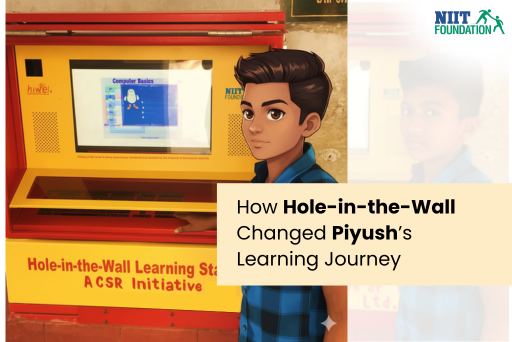The southern part of Asia, more particularly India, is known as the “IT superpower of the world.” However, India is currently facing a major problem. The requirement for qualified workers in this sector is growing manifold, whereas the availability of professionals armed with relevant skills is scarce. The deficits adversely affect the progress of technology industry and at the same time, pose a threat to India’s dominance in the field on a global scale. NASSCOM’s[1] report posits that by the year 2025, India will require over 5 million people in technological spaces, and at the moment, it is nowhere close to fulfilling that need.
Despite making such an increase in the engineering admissions and graduates annually, focus is not on practical applications of employable skills and needs of the future. Although every year approximately 1.5 million[2] engineering graduates complete their studies, only 35% of graduates appear employable in the IT industry. Given this juxtaposition between the level of education and what the industry needs in practice, this is a situation that cannot be ignored and left unaddressed.
The core of the matter lies in the obsolete curricula, which concentrate on theoretical knowledge more than practical skills. Most engineering curricula still lay emphasis on need to be more pivoted on conventional subjects, which have rendered their graduates ill-prepared for the demands posed by new technologies like artificial intelligence, data science, and cloud computing. According to a collection of studies composed by McKinsey[3], nearly 40% of the IT labour force in India requires atleast one retraining program to remain pertinent in their current jobs, which validates the need of bridging the gap.
This is something that is influenced by multiple factors. First, the industry-academia link in India is still weak. Indian colleges and universities function in isolation, with very few -collaborations between industry experts and students to polish skills by training them for a more effective future in growing markets. Where as, Silicon Valley firms, universities, and the government work collaboratively towards mutual benefit for the economic and social uplift of the students by organising collaborative events and upskilling and training sessions, where a diverse range of students get equipped with employable skillset.
Talking about bridging the digital divide of urban and rural communities is extremely necessary. With greater availability of higher learning opportunities and skilling initiatives, urban young men and women form a significant portion of potential workforce growth, but here, rural youth should not be left behind. According to the World Economic Forum[4] report, only 17% of rural youth can read and write basic computer commands in digital English; hence, their access to potential employment in technology is stunted. This is clear evidence of the need for cooperation while working to remedy this issue.
There can be no small schemes to tackle this challenge; a holistic approach is needed that combines many approaches simultaneously. The education syllabus itself should incorporate, alongside other aspects, the domains of emerging technologies, problem-solving skills, and projects that may be useful to industries, which in turn adequately trains and skills young students for a future in the digital sphere.
IT giants like Tata Consultancy Services (TCS) and Infosys have started reskilling and upskilling programs to impart knowledge on AI, cloud computing, and data analytics to their employees and young professionals through various seminars and training sessions. On the other hand, government spending programs, like Skill India and Digital India, aim to repair and bridge the skills gap.
The result is that many public-private partnerships seed their programs with universities by providing interning, mentoring, and real-life projects that can augment practical knowledge. For example, Microsoft India works with the All India Council for Technical Education, or AICTE, to prepare school teachers and students to become cloud-ready.
Training programs like Digital Bus, Hole in The Wall, Digital Literacy Programme, operated by non-profit organizations like NIIT Foundation are critical to infusing employable skills into underprivileged youth, especially in rural areas. Such programs supplement their degree programs, offering them software testing, application development, and cybersecurity, among other things and are an easy way to learn.
The rapidly growing digital economy in India is creating a wealth of highly lucrative and sustainable jobs, presenting a vast opportunity for trained youth. With the right support and training, India’s young and dynamic workforce has the potential to lead the world in IT innovations. This immense possibility can only be realized through a concerted effort by the government, educational institutions, and industry leaders to bridge the digital skills gap and transform India’s youth into a globally competitive technological workforce.
















